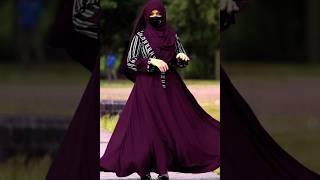
Fly Tying the Carrot Nymph - Classic Searching Nymph Pattern
Комментарии:

I would think trout take it to be a Caddis nymph. This would be good in green too.
Ответить
My local shop (NLIB!) sold me on this fly about 20 years ago. It has brought me good luck many times. Despite not being original, I prefer to dub the black thorax...and, like you, I leave it in the round.
Ответить
Cute fly, fun
Ответить
Like this nymph. Nice looking and simple. Thx Matt.
Ответить
Awesome pattern!! Great job Matt. Will definatly be tying this one when I get home tonight
Ответить
Good Morning Sir Matt,I like carrots LOL... amazing looking fly the orange is awesome on it kind of like a hot spot Thanks for sharing Sir.
Ответить
Great fly! Trout love orange!
Ответить
Its catches i know first hand .got your book awesome👍
Ответить
love the history lesson with a great looking fly .Thanks Matt
Ответить
Don't know if I'd be confident using this but then on a stocked water something different something new may perk their interest ,cheers Matt
Ответить
Great tie Matt as always! Great looking pattern.thanks for sharing Matt.
Ответить
Nice fly!
Ответить
Nice work Matt. This has a really nice profile. Cheers
Ответить
I thought the body was made out of something else, was not expecting floss...nevertheless this design is cool, I like the carrot pattern.
Something else I wanted to comment on, I think I like the blue background more, but as you might have already guessed from my videos, I just happen to like blue 😄

Nice fly Matt. Is that where the expression "dangling a carrot" comes from? I'll bite!
Ответить
That is a great looking fly Matt
Love the history of the fly
Would love to know how you do on it

I should tie some of those. I have known about the pattern forever but never tried it...
An interesting note is that a very common free-living caddis larva in eastern streams, Chimarra (adult is the Little Black Caddis/Little Black Sedge), has a yellow-orange to bright orange abdomen. It would be matched in size by 1XL-2XL nymph hooks approx. #14-18... Now I have convinced myself I need to tie some

Nice pattern Matt. Thanks for sharing!
Ответить
As always love the whole history of the fly. Thank you!
Ответить
Thanks for sharing Matt definitely a fishable fly not sure why it’s not more popular I will be giving it a try
Ответить
Matt you tie some great "mouches"! If that pattern were tied with a cream body you could call it a Parsnip Nymph ;o) I first saw that fly in the Orvis Fly Pattern Index by John Harder probably 30 years ago..but the top view photo didn't show the "rusty" orange floss body because it had a back of peacock herl, wing case of pearl flashabou, and a peacock thorax palmered with brown speckled hen, same hackle used for tail. Very confusing for a beginning tyer unless you read the recipe. Finally saw it as you tied it but from Klausmeyer's 101 Favorite Nymphs & Wet Flies.
There's a ton of "carrots" on the net, but most are "modernized", tied like Czech nymphs on curved hooks, or tied in many styles, shapes, and forms. I really like how you tied it, especially with that brown dyed grizzly. I like the fat black thorax, and the way it holds up the collar. It looks like a Partridge & Orange on steroids, a very productive fly. Plus the black is a trigger for a nymph close to hatch when the case darkens. Thanks, your history research inspires me to do the same.

Great tie
Ответить
Nice video. Keep up the good work.
Ответить
Thank you for your hard work
Ответить
Great info and great fly!
Ответить
There are some sulphur nymphs with a distinctly orange coloring. I like this one for E. TN. tailwaters. Swinging it in a size 14 ought to get bit by some big fish. Nice video, as usual.
Ответить
I love the background research that you do on these flies. I've seen this also tied with ostrich instead of the black chenille.
Ответить
This is a cool fly!
Ответить
Really neat looking fly . Thanks
Ответить
love the name carrot nymph....lol...some of the name are funny...
Ответить
...
Ответить
I really dig this fly. Lots of color variant options. Thanks Sir Matt.
Ответить
Great looking bug Matt. I saw this first in one of your short videos.
Ответить
It looks like a good imitation of the October caddis; I'll have to check it out
Ответить
Cool fly
Ответить

























